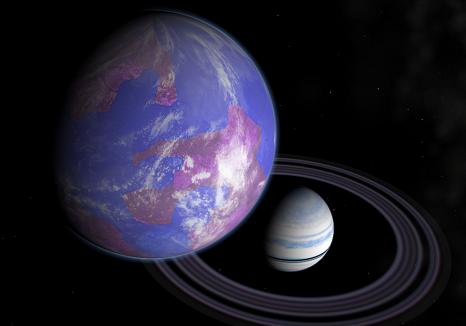A scientist from the United Kingdom is trying to find out whether the oscillations of these planets will help astronomers discover the moons?

Astronomers seem to have grown tired ofDirect observations of planets, so they are now pushing for the next big discovery: exomoons orbiting planets outside the solar system (exoplanets). In a new study, a British astronomer wants to use a technique that helps to indirectly observe planets outside the solar system. This technique examines candidate stars to see their wobbles. These fluctuations are caused by the planet's gravitational pull, thereby revealing its presence.
David Kipling, from University College London, claims that the presence of moons can also be detected using the oscillation method. Track a planet in its orbit around its parent star to measure its wobbles caused by that planet's interaction with its moon or moons. Especially asking Kipling to locate moons the size of the earth Orbiting Jupiter-like or larger planets, which are the most common type of planets discovered to date.
Kipling was awarded funding for researching his method for locating the moons and calculating just how far they are from the planet they orbit. "Until now, astronomers have only studied the changes in the planet's position as it orbits its star. Because of this, it is difficult to confirm the presence of a moon, because these changes are affected by additional phenomena such as the discovery of a smaller planet in a close orbit." said Kipling. "By adopting new methods and observing changes in the planet's position and speed each time it passes in front of its star, we will gain more reliable information and have the ability to discover moons with a mass similar to that of the Earth, around gas giants the size of Neptune and above."
Kipling's theoretical study appeared in the December 11 issue of the Journal of the Royal Astronomical Society.
So far, over 300 extrasolar planets have been discovered. 30 of them are within the zone of life, but as mentioned the planets themselves are gas giants, most of them many times more massive than Jupiter. These gas giants are supposed to be hostile to the creation of life as we know it and therefore are not considered planets where life can be found, but what about moons the size of the Earth orbiting them? Can they be traced, Kipling believes so.

One response
I believe not.